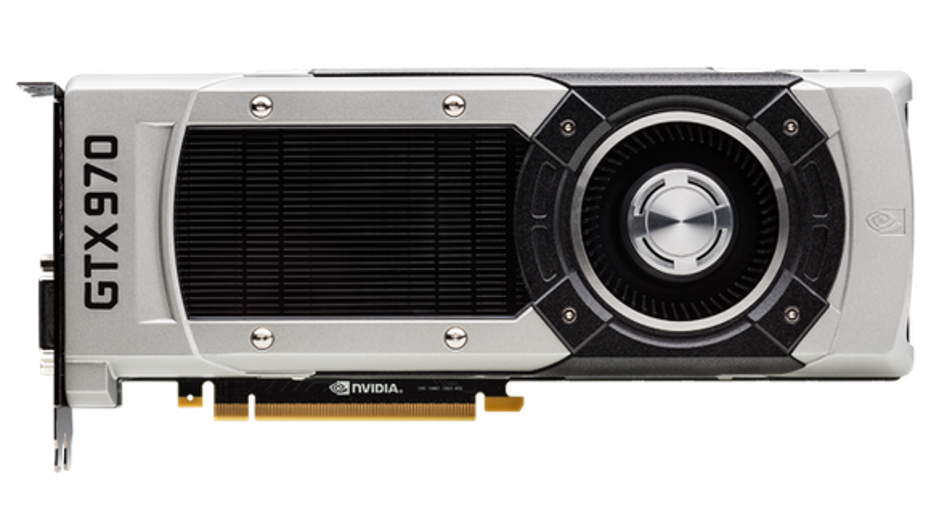NVIDIA Corporation and the GeForce GTX 970 Paradox

Image source: NVIDIA.
It's not a stretch to say that Valve Corporation's Steam platform is the most popular PC game distribution platform out there today. As such, the information that the company collects about the computers of its users, through its voluntary Steam Hardware Survey, is likely the best picture available about what hardware and software PC gamers currently own and use.
According to the survey, the most popular graphics processor among Steam users today, capturing 7.35% share, isNVIDIA'sGeForce GTX 970, a product that launched back in Sept. 2014. The second most popular card is the GeForce GTX 960, a lower-performing and lower-priced card that launched in Jan. 2015, with 4.98% share.
What's notable, and actually quite counterintuitive, is how the GTX 970, a pricier product than the GTX 960, managed to outsell the lower-priced GTX 960 -- a popular card in its own right -- by a significant margin.
GTX 970 had a head start, but that doesn't completely explain it
The GTX 970 obviously had a roughly four-month head start on the GTX 960, but I don't think that entirely explains the significant gap in adoption between the two products. Why?
Well, back in February, that 6.38% of those who participated in the Steam Hardware Survey owned GTX 970 cards. At that same point in time, 4.09% of those surveyed were using GTX 960 cards. Fast-forwarding to June, GTX 970 adoption rose to 7.35%, while GTX 960 share increased to 4.98%.
This means that the GTX 970 captured 0.97% additional share among those surveyed in that time while the GTX 960 captured 0.89% share. These figures imply that even at this point in these cards' respective product cycles, GTX 970 was still outselling the GTX 960.
What makes this even more impressive, though, is that the GTX 970 had a good month in June, seeing an increase in share by 0.42%, even though NVIDIA announced pricing, specifications, and launch date for its successor, the GTX 1070, back in May. So much for the Osborne Effect.
What might explain it, then?
This data suggests that customers are more willing to pay more for a greater level of performance than they are to save money up front but get a lower level of performance.
I would imagine that part of this is probably due to the fact that big-budget games are just becoming more demanding (NVIDIA refers to this as "production value"), which leads a good number of gamers to find value in paying for faster hardware. However, I would also attribute the success of the GTX 970 relative to the GTX 960 as being partially due to good product segmentation actions on NVIDIA's part.
According to review website Tech Power Up, at the popular 1920x1080 resolution, the GTX 970 offers 1% better performance-per-dollar relative to the GTX 960 -- they're essentially equal in that metric.
In other words, the cheaper GTX 960 isn't necessarily a better "value" than the more expensive GTX 970. In fact, given that the GTX 970 should enable a fundamentally better user experience in higher-end games than the GTX 960 does, the GTX 970 could arguably be viewed as the better value for gamers who regularly play demanding games.
NVIDIA hassaidthat it has seen both units and average selling prices in its gaming business grow at a robust clip over the last several years. It'll be interesting to see just how long it can continue to grow both simultaneously.
The article NVIDIA Corporation and the GeForce GTX 970 Paradox originally appeared on Fool.com.
Ashraf Eassa has no position in any stocks mentioned. The Motley Fool owns shares of and recommends NVIDIA. Try any of our Foolish newsletter services free for 30 days. We Fools may not all hold the same opinions, but we all believe that considering a diverse range of insights makes us better investors. The Motley Fool has a disclosure policy.
Copyright 1995 - 2016 The Motley Fool, LLC. All rights reserved. The Motley Fool has a disclosure policy.



















